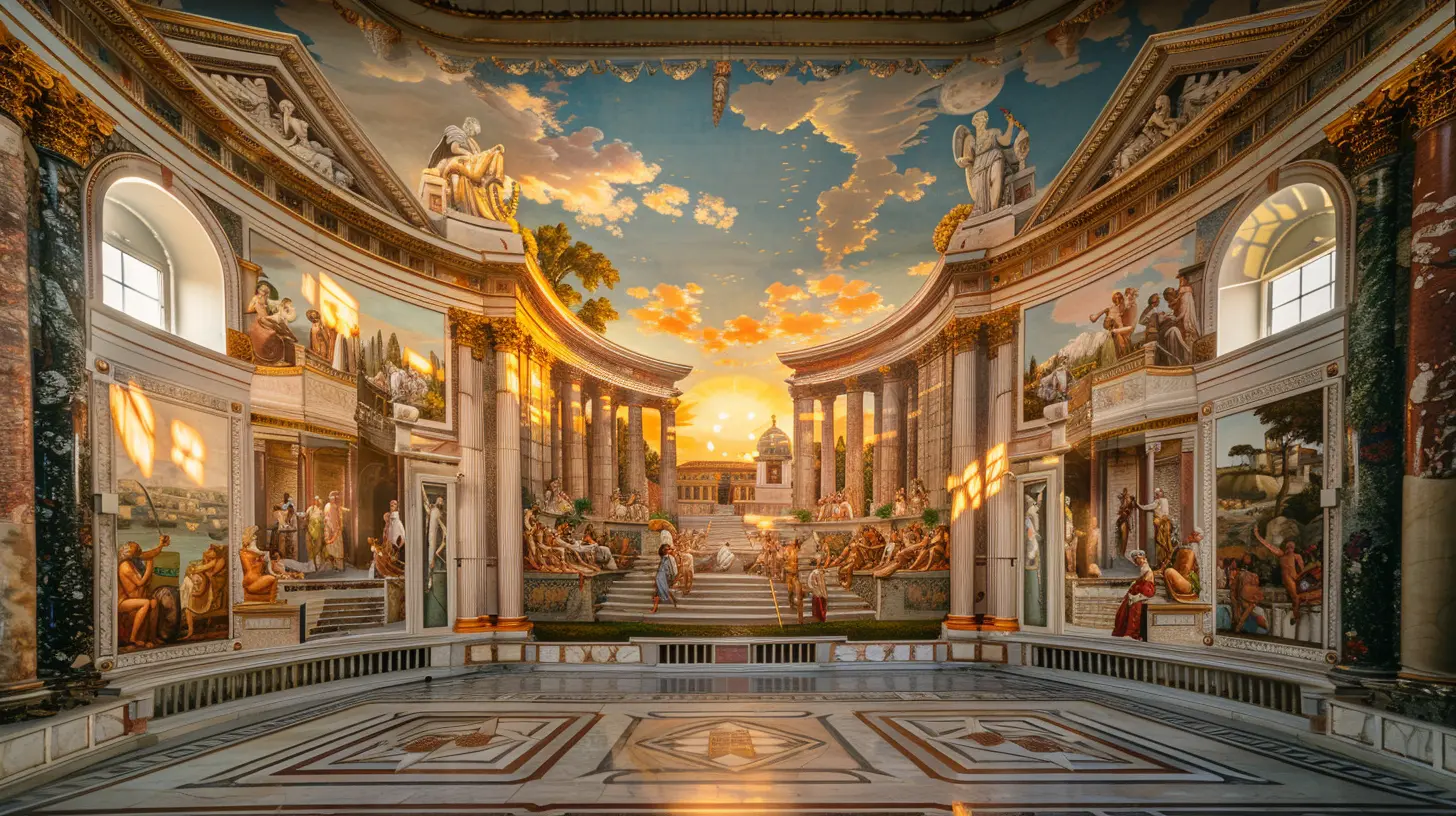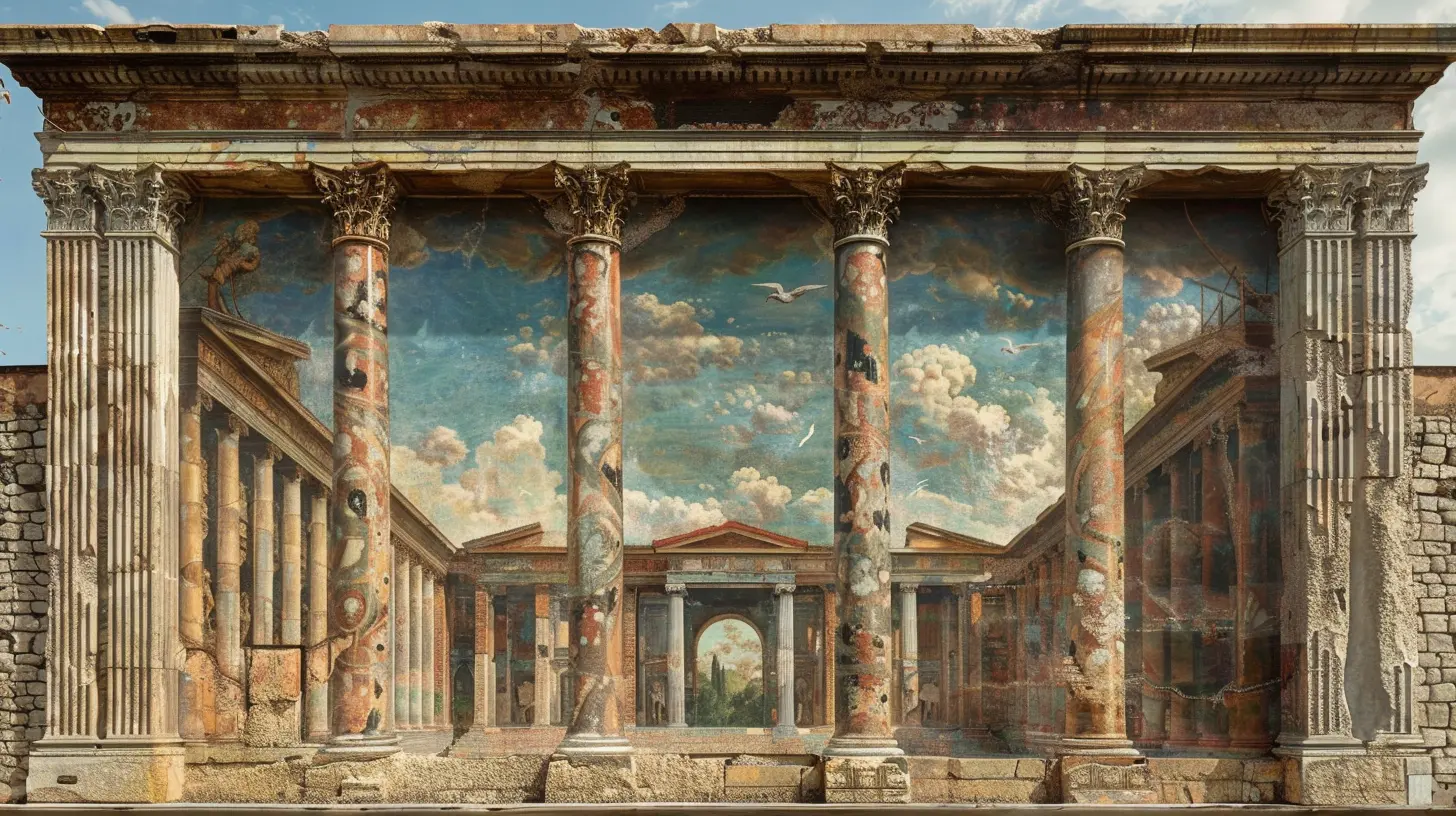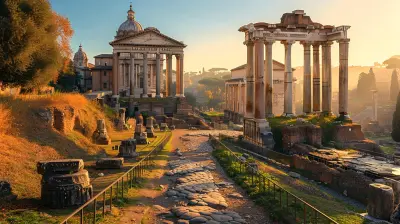Exploring Ancient Greek Mythology Through Art and Architecture
4 October 2025
Greek mythology has always been more than just a collection of stories—it’s the very foundation of Western art, literature, and even philosophy. But if you really want to experience the power of these legends, you won’t find it in books alone. The real magic happens when you see mythology etched into marble, painted onto pottery, and towering over ancient cities in architectural masterpieces.
So, let’s take a journey through time and uncover how Greek art and architecture bring mythology to life. From the mighty Parthenon to intricate vase paintings, every piece tells a story that still captivates us today. 
The Role of Mythology in Ancient Greek Art
Greek mythology wasn’t just entertainment; it was a way of life. The gods, heroes, and mythical creatures weren’t distant figures—they influenced everything from religious practices to daily decision-making. And what better way to honor them than through art?Artists and architects used their work to keep myths alive, showcasing powerful figures like Zeus, Athena, and Poseidon in ways that made them feel almost real. Whether carved in stone or painted on a vase, these images weren’t just decorative. They were filled with symbolism, teaching moral lessons, reinforcing social values, and strengthening cultural identity. 
Greek Architecture: Grand Temples for Divine Beings
When you think of ancient Greece, what’s the first image that pops into your head? Most likely, it’s an awe-inspiring temple standing tall under the Mediterranean sun. These structures weren’t just buildings; they were sacred spaces dedicated to the gods.The Parthenon – A Temple Fit for a Goddess
Sitting atop the Acropolis in Athens, the Parthenon is the ultimate symbol of Greek architectural brilliance. Built in honor of Athena, the goddess of wisdom and warfare, this temple is a masterpiece of balance and proportion.Every detail had meaning—its massive columns represented strength and stability, while its intricate sculptures depicted scenes from mythology, including the epic battle between Athena and Poseidon for control of Athens. The Parthenon wasn’t just a place of worship; it was a visual storybook celebrating the gods’ influence over human life.
The Temple of Zeus at Olympia – Home of a Wonder
Now, if you visited Olympia in ancient times, you’d find yourself staring at one of the Seven Wonders of the Ancient World—the colossal Statue of Zeus. Built inside his temple, this masterpiece was over 40 feet tall, made of gold and ivory, and radiated divine majesty.The temple itself, with its massive Doric columns and detailed pediments, was designed to reflect Zeus’s authority as the king of the gods. Even today, its ruins give us a glimpse of the incredible artistry that once dominated Greece.
The Temple of Apollo at Delphi – The Oracle’s Sacred Home
Delphi was more than just a city; it was the spiritual center of the ancient world. The Temple of Apollo housed the famous Oracle, a priestess who supposedly spoke the words of the god himself.Architecturally, the temple was stunning. Perched on the slopes of Mount Parnassus, it blended seamlessly with its surroundings, symbolizing Apollo’s connection to nature and prophecy. Every visitor who sought wisdom from the Oracle had to pass through its grand columns, feeling the weight of mythology pressing around them. 
Bringing Myths to Life Through Sculpture
Greek artists didn’t just tell myths—they made them breathe. Statues of gods and heroes weren’t cold, lifeless figures; they were dynamic, filled with movement and emotion.The Statue of Athena Parthenos – A Goddess in Gold
Imagine walking into the Parthenon during its prime and seeing a 40-foot-tall statue of Athena shimmering in gold and ivory. Crafted by Phidias, this masterpiece depicted the goddess in full armor, holding a small statue of Nike, the personification of victory.This wasn’t just a religious icon; it was a political statement, showing Athens’ power and dedication to their patron deity. Sadly, the original statue is lost, but its impact on Greek art remains legendary.
The Laocoön Group – A Tragic Tale in Stone
One of the most powerful mythological sculptures ever created, the Laocoön Group captures a moment of pure agony. It shows the Trojan priest Laocoön and his sons being attacked by sea serpents, a punishment from the gods for warning the Trojans about the Greek’s wooden horse.Look at this sculpture, and you can feel the struggle—the twisting bodies, the pain in their faces, the desperation in their movements. It’s a stunning example of how Greek artists could turn myths into deeply emotional experiences. 
Greek Pottery: Everyday Art with Mythical Scenes
While temples and statues were grand, some of the most detailed mythological scenes come from something much smaller—pottery. Greek vases weren’t just practical; they were canvases for storytelling.Black-Figure and Red-Figure Pottery
Greek pottery came in two major styles: black-figure (where figures were painted in black on a red background) and red-figure (where figures were left in red against a black background). These styles allowed artists to create detailed narratives, sometimes covering entire vases with scenes from mythology.You could find depictions of Hercules battling the Nemean lion, Achilles mourning Patroclus, or even Dionysus leading a drunken revelry. These pieces weren’t just for decoration; they educated people on the myths, keeping the stories alive in everyday life.
The François Vase – A Mythological Masterpiece
One of the most famous examples of mythological pottery, the François Vase, is packed with over 200 figures, each representing a different myth. From scenes of the Trojan War to the adventures of Theseus, it’s a true encyclopedia of Greek mythology in ceramic form.The Legacy of Greek Mythological Art and Architecture
It’s incredible how much influence Greek mythology still has today. Walk through a modern museum, and you’ll find countless artworks inspired by these ancient stories. Visit cities around the world, and you’ll see neoclassical buildings mimicking the grandeur of Greek temples.Why does this legacy endure? Because mythology speaks to something deep inside us—our fears, our hopes, our quest for meaning. And through art and architecture, these stories remain as vivid as they were thousands of years ago.
If you're ever lucky enough to stand before the ruins of a Greek temple or admire an ancient vase up close, take a moment. Think about the myths carved into stone, the gods who once ruled over marble halls, and the artists who poured their souls into their work.
Because in the end, Greek mythology isn't just history—it’s a living, breathing force that continues to shape our world.
all images in this post were generated using AI tools
Category:
Cultural ToursAuthor:

Shane Monroe
Discussion
rate this article
1 comments
Quinn Gray
This article beautifully encapsulates the rich tapestry of Ancient Greek mythology through the lens of art and architecture. Your insights into how these elements intersect provide a compelling narrative for both history enthusiasts and casual readers alike. Thank you for sharing your expertise in such an engaging manner!
October 6, 2025 at 3:57 AM

Shane Monroe
Thank you so much for your kind words! I'm glad you found the exploration of Ancient Greek mythology through art and architecture engaging. Your feedback means a lot!


